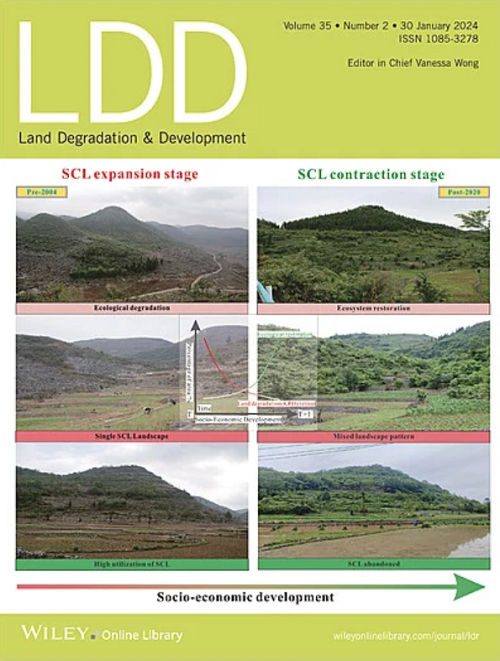Soil Salinity Reduces Soil Carbon Storage Mainly by Decreasing Inorganic Carbon in the Ring Tarim Basin of Xinjiang, China
IF 3.6
2区 农林科学
Q2 ENVIRONMENTAL SCIENCES
引用次数: 0
Abstract
Saline soil is an important inorganic carbon pool and is highly susceptible to environmental change. The Tarim Basin is the largest inland basin around the world, with saline land making up approximately 20% of its total area, while few research has been conducted on salt-affected soil carbon density and its distribution in the region. To identify the effect of soil salinity on soil carbon density, we collected 135 soil profiles (0–100 cm), and calculated the soil organic carbon density (SOCD), soil inorganic carbon density (SICD), soil total carbon density (STCD) and their distribution, and discussed their relationships with climate and soil physicochemical properties. Results showed that average STCD, SOCD, and SICD at 0–100 cm soil profile were 25.0, 3.7, and 21.3 kg C m−2, respectively. SICD was approximately 6.30–9.04 times higher than SOCD. The vertical distribution of SOCD decreased with increasing soil depth, whereas STCD and SICD increased. Soil salinity had negative effects on STCD by reducing both SOCD and SICD, with the negative impact increasing with salinity degrees. Compared to non-salinity, STCD at 0–100 cm soil profile decreased by 10.5%, 7.0% and 10.5% under light, moderate, and severe salinity, respectively. Random forest analysis indicated that soil total nitrogen content (STN) and soil bulk density (BD) were the most important predictor variables for estimating SOCD and SICD. Soil salinity had significant negative correlation with STN and BD, resulting in a negative effect on SOCD and SICD. Our findings emphasized that soil salinity reduced STCD mainly by reducing SICD, and the reduction in carbon stocks increased with increasing soil salinity degree. In addition, mitigation of the adverse effects of soil salinity on STC stocks could be considered by increasing STN content and soil bulk density.求助全文
约1分钟内获得全文
求助全文
来源期刊

Land Degradation & Development
农林科学-环境科学
CiteScore
7.70
自引率
8.50%
发文量
379
审稿时长
5.5 months
期刊介绍:
Land Degradation & Development is an international journal which seeks to promote rational study of the recognition, monitoring, control and rehabilitation of degradation in terrestrial environments. The journal focuses on:
- what land degradation is;
- what causes land degradation;
- the impacts of land degradation
- the scale of land degradation;
- the history, current status or future trends of land degradation;
- avoidance, mitigation and control of land degradation;
- remedial actions to rehabilitate or restore degraded land;
- sustainable land management.
 求助内容:
求助内容: 应助结果提醒方式:
应助结果提醒方式:


